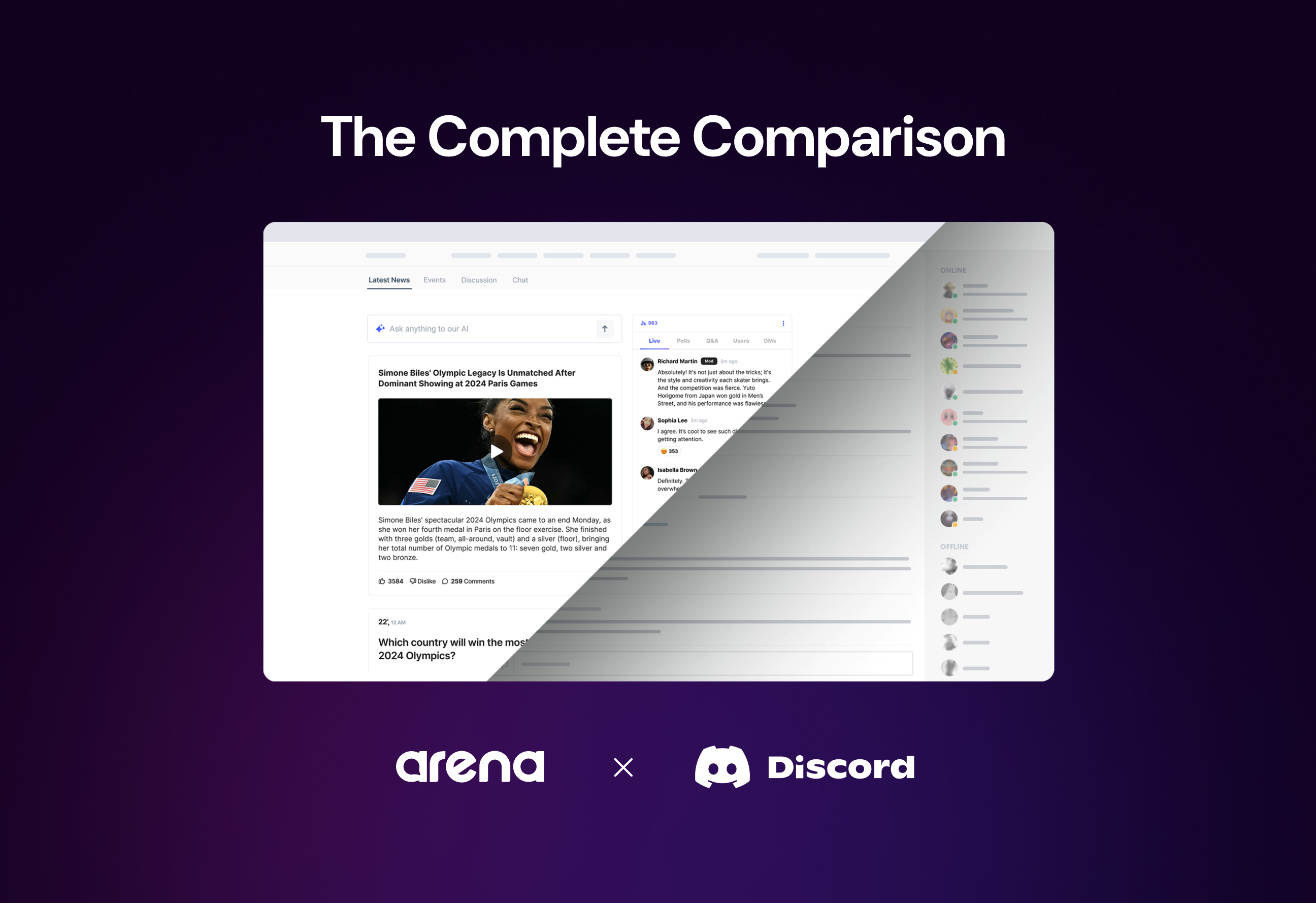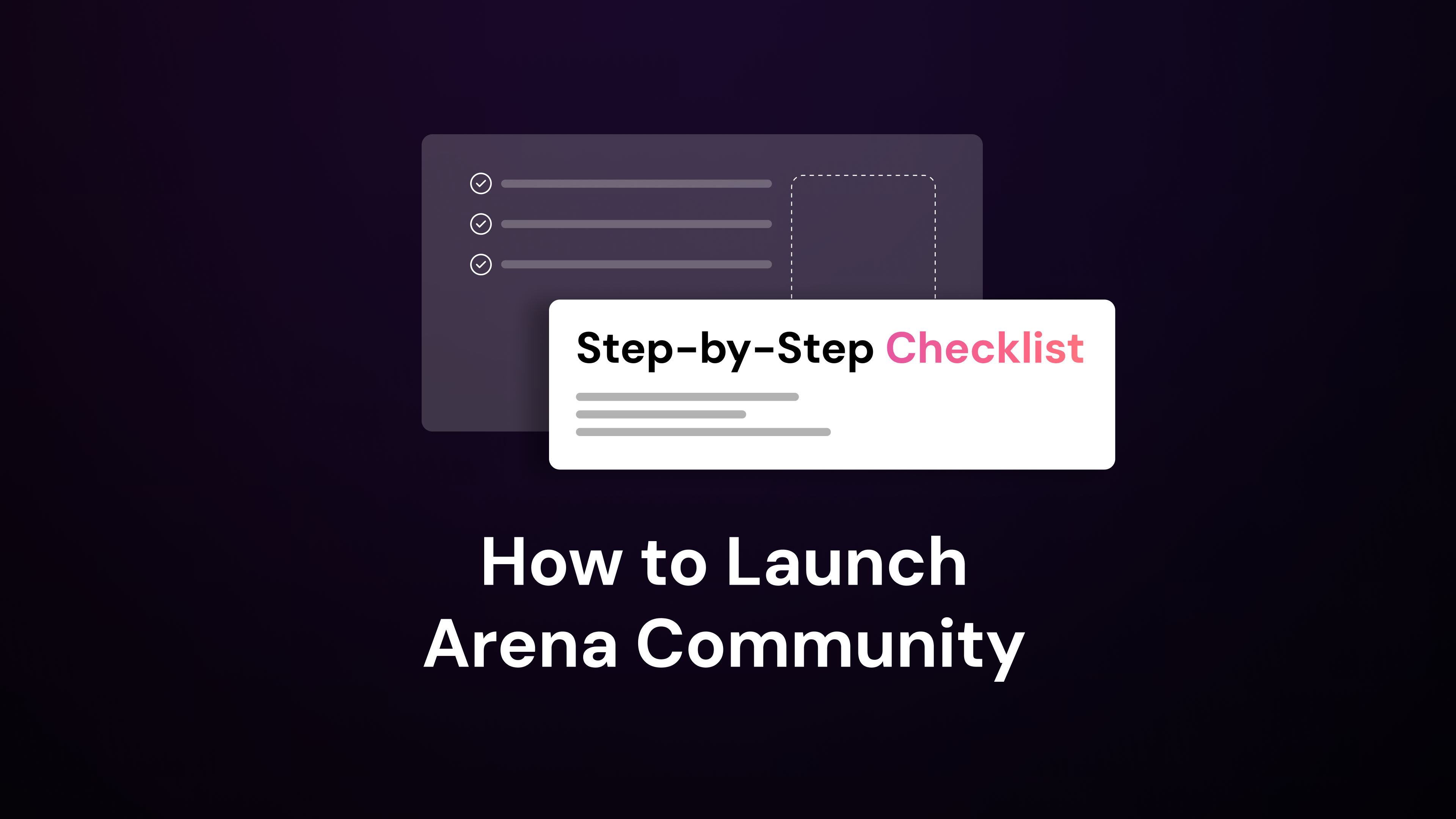In this guide, we uncover 7 proven ways to monetize a sports community and generate revenue while boosting engagement. You’ll discover practical examples that show how to implement these strategies effectively, ensuring your sports community thrives financially and keeps members actively involved.
Introduction to How to Monetize a Sports Community
Implementing the right monetization strategies for your community can provide the resources to improve engagement and grow your platform.
Understanding the Value of Your Community
Your community’s true value lies in the engagement, loyalty, and enthusiasm of its members. Embracing a community flywheel approach allows you to continuously improve your platform based on member interactions and feedback. Collecting and analyzing fan data is essential; implementing effective first-party data strategies allows for personalized offerings and attracts sponsors by highlighting active community participation.
Setting Clear Goals for Monetization
Before diving into monetization strategies, set clear objectives. Determine what you aim to achieve, whether it’s generating revenue to develop new features, rewarding members, or expanding your reach. Clear goals will guide you in choosing the most effective methods and optimizing your community engagement tactics. Diversifying revenue streams is key; ThemeBoy suggests experimenting with various strategies and using analytics to track their performance. Always ensure that your monetization efforts add value for your community and enhance their overall experience.
7 Ways to Monetize a Sports Community
1. Membership and Subscription Models
Implementing membership and subscription models generates consistent revenue and encourages fans to support your community while enjoying exclusive perks.
Tiered Membership System
Developing a tiered membership system allows you to provide different levels of access based on the commitment of your members. Consider offering:
- Basic Tier: Free or low-cost access with limited features.
- Mid Tier: Additional content and features for a moderate fee.
- Premium Tier: All-inclusive access with exclusive perks at a higher price point.
The tiered membership system caters to a broader audience and incentivizes members to upgrade for more benefits. According to Mighty Networks, the average membership fee is around $48 per month, which can significantly boost revenue as your community grows.
Exclusive Content and Benefits
To entice members to join higher tiers, provide exclusive content and experiences. This could include:
- Behind-the-scenes videos with athletes or coaches.
- In-depth analysis and strategy breakdowns.
- Virtual meet-and-greets with sports personalities.
- Exclusive live Q&A sessions.
- Access to live sports streaming events.
By delivering valuable content, you enhance the member experience and deepen their connection to the community.
Subscription Platforms
Using subscription platforms can simplify the management of memberships. Subscription platforms handle payments, content delivery, and member communication, allowing you to focus on creating quality content. Platforms like Arena provide tools to build, manage, and engage online communities effectively, offering features like live blogging, chat functionalities, content management systems, and real-time audience data dashboards. They ensure seamless integration with existing platforms, robust moderation and security, and compatibility with various content management systems and social media networks to foster community interaction.
2. Selling Merchandise and Products
Selling merchandise is an effective way to monetize a sports community while strengthening your brand.
Identify Popular Merchandise Ideas
Start by considering what items your community would appreciate. Classic options include jerseys, hats, and scarves featuring your team’s logo or colors. Think beyond apparel—accessories like bags, phone cases, mugs, and stickers can also be popular. For example, NCW Alliance FC offers a range of branded items in their online shop, allowing fans to show their support in various ways.
Survey your community to discover their preferences. Engaging with your audience can provide insights into what products they want and increase the likelihood of successful sales.
Set Up an Online Store
An accessible online store is essential for selling merchandise. Platforms like Shopify or WooCommerce enable you to set up a store with minimal technical expertise. Use social media channels by adding shopping links to posts and stories or creating dedicated e-commerce accounts. Additionally, implementing live shopping strategies can engage your audience and boost sales. The NBA Store has a separate Instagram account showcasing merchandise, making it easy for fans to browse and purchase items directly from the app.
Ensure your online store is mobile-friendly and provides a seamless shopping experience. Incorporating features like live chat for eCommerce enhances customer satisfaction and encourages repeat purchases. Research shows that live chat access increases the likelihood of completing a purchase and 63% of users said they would return for future business. Clear product images, detailed descriptions, and a simple checkout process can improve customer satisfaction and encourage repeat purchases.
Use Limited Edition Products
Offering limited-edition merchandise can create excitement and urgency among your fans. Limited runs of products can boost sales and provide exclusive items that appeal to collectors. For instance, creating a signed jersey to celebrate a record-breaking season can drive interest and make your community feel part of a special moment.
Limited edition items can also be tied to events, player achievements, or anniversaries. By promoting these exclusive products through your channels, you can generate buzz and encourage quick purchases.

3. Sponsorship and Advertising Opportunities
Partnering with sponsors and advertisers can provide substantial revenue for your sports community.
Attract Potential Sponsors
To attract sponsors, showcase the value of your community by highlighting engagement rates and audience demographics. Demonstrate how partnering with you can help brands reach their target market effectively. Consider these steps:
- Identify Relevant Brands: Focus on companies that align with your community’s interests and values.
- Create a Media Kit: Include statistics like website traffic, social media followers, and engagement metrics.
- Offer Sponsorship Packages: Provide various levels of sponsorship with different benefits and exposure opportunities.
For example, BattleBots prominently displays their sponsors on their website, offering them visibility to a dedicated fan base.
Implement Effective Ad Placements
Strategic ad placements can generate revenue without compromising user experience. Here are some effective methods:
- Website and App Ads: Place banner ads on high-traffic areas of your website or mobile app.
- Social Media Integration: Incorporate sponsor logos in your social media graphics, such as game day lineups or player of the match posts.
- Newsletter Inclusions: Feature sponsors in your email newsletters with branded content or special offers.
The EHF EURO integrates sponsor logos into match result graphics on social media, providing visibility while delivering valuable content to fans.
Create Sponsored Content
Developing content specifically for sponsors can enhance engagement and generate income. Consider these ideas:
- Sponsored Contests and Giveaways: Partner with brands to offer prizes, encouraging interaction and sharing.
- Behind-the-Scenes Features: Create exclusive content that includes product placement or highlights sponsor involvement.
- Branded Segments: Offer named sponsorships for regular content features, such as “Play of the Week” presented by a sponsor.
For instance, Manchester City’s toilet paper challenge video featured Etihad Airways, seamlessly integrating the sponsor into entertaining content.
4. Hosting Events and Workshops
Hosting events and workshops is a great way to engage your sports community and create new revenue streams.
Organize In-Person and Virtual Events
Bringing your community together through events can significantly boost engagement and monetization. Consider organizing both in-person and virtual gatherings:
- In-Person Events: Host meetups, sports clinics, or tournaments where members can participate actively. In-person events foster community spirit and offer unique experiences that members value.
- Virtual Events: Arrange online gatherings like virtual watch parties, live Q&A sessions with athletes or coaches, or webinars on sports-related topics. Virtual events have the advantage of reaching a wider audience without geographical limitations, and staying updated with virtual events trends can help you maximize their impact.
For example, many esports communities organize online tournaments, charging entry fees and securing sponsorships to maximize revenue.
Charge for Access or Participation
Monetize your events by implementing fees for access or participation. Fans are often willing to pay for exclusive experiences:
- Ticket Sales: Sell tickets for in-person events such as games, workshops, or meet-and-greets.
- Entry Fees: Charge participation fees for tournaments or fantasy leagues.
- Exclusive Content Access: Offer paid access to live streams, behind-the-scenes content, or virtual events.
As an example, offering a “Sideline Experience” package where fans pay to watch pre-game warmups from field level and meet players can generate significant income.
Partner with Experts and Influencers
Collaborating with experts and influencers can enhance your events and attract a larger audience:
- Guest Speakers: Invite coaches, professional athletes, or sports analysts to host workshops or Q&A sessions.
- Co-Hosting Events: Partner with influencers who have a strong following to co-host events, expanding your reach.
- Sponsored Events: Work with sponsors to fund events, providing them exposure while offsetting costs.
For instance, organizing a virtual training session with a renowned athlete can draw substantial interest and provide a unique opportunity for your community.
By strategically hosting events and workshops, you not only enrich your community’s experience but also create valuable opportunities for monetization.
5. Affiliate Marketing and Partnerships
Affiliate marketing and building partnerships can generate revenue for your sports community by promoting products and collaborating with brands that match your audience’s interests.
Choose Relevant Affiliate Programs
Select affiliate programs that align with your community’s passion. Partner with brands that offer products your audience will appreciate, such as:
- Sports equipment manufacturers
- Fitness and health supplement providers
- Sports apparel and merchandise companies
For example, Oxford Saints partnered with MyProtein to promote their products with a discount code, earning commissions on sales. By choosing relevant programs, you ensure that the promotions feel natural and beneficial to your members.
Promote Products and Services
Effectively promote affiliate products by integrating them into your content in a way that adds value. Strategies include:
- Writing honest reviews of sports equipment or gear.
- Creating engaging posts featuring the products in action.
- Offering exclusive discount codes to your community members.
For instance, you could share a video demonstrating new training equipment, highlighting its benefits, and providing a link for your audience to purchase it. Such an approach helps your community discover useful products while generating affiliate revenue.
Build Long-Term Partnerships
Develop lasting relationships with brands and sponsors by creating mutually beneficial partnerships. Consider:
- Collaborating on co-branded merchandise with local businesses.
- Hosting joint events or fundraisers with partner organizations.
- Engaging in cross-promotional campaigns with complementary brands.
An example would be partnering with a local restaurant to create team-themed menu items, with a portion of the proceeds benefiting a community cause. Such collaborations can strengthen community ties and open up additional revenue opportunities over time.
6. Offer Online Courses and Training
Creating online courses and training programs is an effective way to monetize a sports community while providing value to your members.
Developing Educational Content
Start by identifying topics that resonate with your audience. These might include sports skills development, fitness strategies, or nutrition plans. You can create live courses that offer interactive experiences or develop on-demand courses that members can access at their own pace. Consider producing e-books or guides as supplementary materials. Offering personalized coaching sessions can further enhance the learning experience.
Utilizing E-Learning Platforms
Choose an e-learning platform that fits your needs. You might use dedicated course platforms like Udemy or Teachable, or integrate courses directly into your website or mobile app. Ensure the platform supports various content types, such as videos, downloadable materials, and interactive elements. Offering both live and pre-recorded content can cater to different learning preferences within your community.
Marketing Your Courses to the Community
Promote your courses through your existing communication channels. Use your social media presence to share previews or highlights of your content. Use email newsletters to inform members about new offerings and special promotions. Collaborate with athletes or experts for guest appearances to generate interest. Consider offering early-bird discounts or bundled packages to encourage sign-ups. For inspiration, look at how platforms like Peloton have built communities around virtual fitness classes.
7. Use Social Media for Revenue
Social media platforms offer direct channels to engage your sports community and open up revenue opportunities.
Building a Strong Social Media Presence
Start by establishing a solid presence on platforms like Instagram, TikTok, and YouTube to focus on building online communities. Share engaging content such as game highlights, behind-the-scenes footage, and fan-generated posts. Sharing such content keeps your audience connected and attracts potential sponsors. For example, the NBA actively shares highlights and behind-the-scenes content across its social media channels to keep fans engaged and create sponsorship opportunities.
Using Social Media Monetization Tools
Take advantage of monetization features offered by social media platforms:
- Sponsored Posts: Partner with brands that align with your community’s interests to create sponsored content.
- Ad Revenue Sharing: On platforms like YouTube, you can earn revenue through ads displayed on your videos once you meet the eligibility requirements.
- Affiliate Marketing: Promote sports-related products and earn commissions on any sales generated through your referral links.
Sports influencers often combine these methods, collaborating with brands for sponsored content, participating in affiliate programs, and monetizing their channels through ad revenue.
Engaging with Your Audience Effectively
Active engagement with your audience strengthens community loyalty and boosts visibility. Encourage fans to participate by:
- Hosting live Q&A sessions or virtual events with athletes or experts.
- Running contests or challenges that encourage user-generated content.
- Responding to comments and messages to foster a sense of community.
For instance, Manchester City launched a fan engagement campaign by creating a challenge video in partnership with Etihad Airways, which not only entertained fans but also integrated sponsorship naturally.
By building a strong social media presence, using platform monetization tools, and actively engaging with your audience, you can effectively generate revenue while strengthening your sports community.
Conclusion and Next Steps
Monetizing your sports community is an ongoing process that requires evaluation and adaptation to be successful.
Evaluating Your Monetization Strategies
Regularly assess how your monetization efforts are performing. Use analytics to track engagement rates, conversion rates, and revenue from various methods, utilizing customer data to personalize marketing communications and refine strategies based on factual insights. Pay attention to which strategies resonate most with your community and which ones need adjustment. Ensure that your approaches align with your members’ interests and values while providing genuine value.
Continuously Improving and Adapting
Stay open to refining your strategies based on data and community feedback. Experiment with new ideas and be willing to adjust your offerings as needed. Keep informed about industry trends and emerging monetization opportunities. Engaging with your community helps you understand their needs, allowing you to adapt and enhance their experience. By continuously improving, you can sustainably grow your revenue while fostering a loyal and engaged community.
Implementing these proven strategies will help you effectively monetize a sports community while enhancing engagement and providing value to your members. Remember, aligning your efforts with your community’s interests and needs is key to success. Start applying these methods today, and watch your sports community thrive both financially and socially.
Visit Arena’s pricing page to explore our plans and see how we can help you achieve your sports community goals. Sign up now and start creating unforgettable, personalized experiences for your fans.



